Canadian Classique: Toronto FC, Montreal Impact face off in pivotal match
Piette #Piette

Toronto FC and Montreal Impact experienced rough starts to their MLS is Back Tournament campaigns. That’s why Thursday’s Canadian Classique is so pivotal.
A defeat wouldn’t be devastating – four third-place sides qualify for the knockout stage – but failing to win either of the opening two games would be a blow to a team’s morale.
Despite the end results for each side, there were some intriguing takeaways from both matches which could be carried into this always-feisty derby.
Here’s an in-depth breakdown of what to expect in the “MLS is Back” edition of the Canadian Classique.
How will TFC, Impact line up?
Impact coach Thierry Henry raised some eyebrows by naming Samuel Piette as a right-back (or wingback depending on the game’s situation) for his teams’s first match instead of Zachary Brault-Guillard, who was available off the bench. Centre-back Joel Waterman was experiencing an apparent thigh injury and missed Montreal’s 1-0 loss to the New England Revolution.
Squad rotation will be important, but surely after New England targeted Piette on the right, coupled with the importance of Thursday’s match, Henry will opt for this potential XI below.
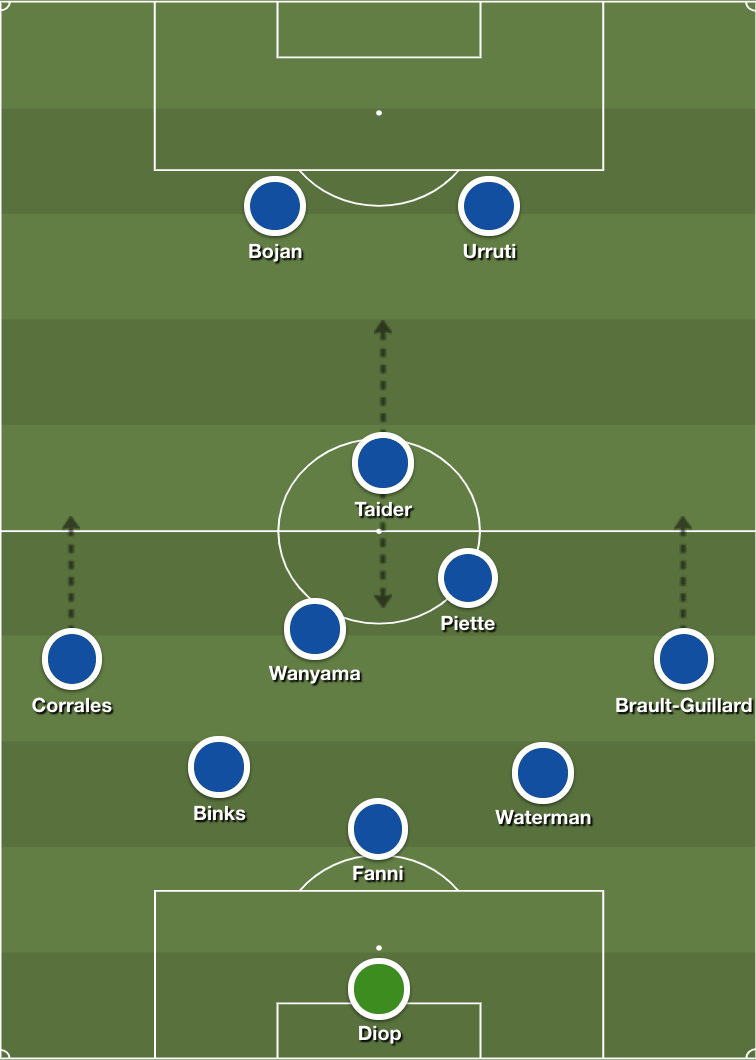
However, given Toronto’s threat out wide, Henry could switch to a 3-4-3 to provide cover for the wingbacks, as illustrated below. That would likely lead to one of Victor Wanyama or Piette being dropped. Don’t be surprised if Orji Okwonkwo or Ballou Tabla are chosen up front, either.
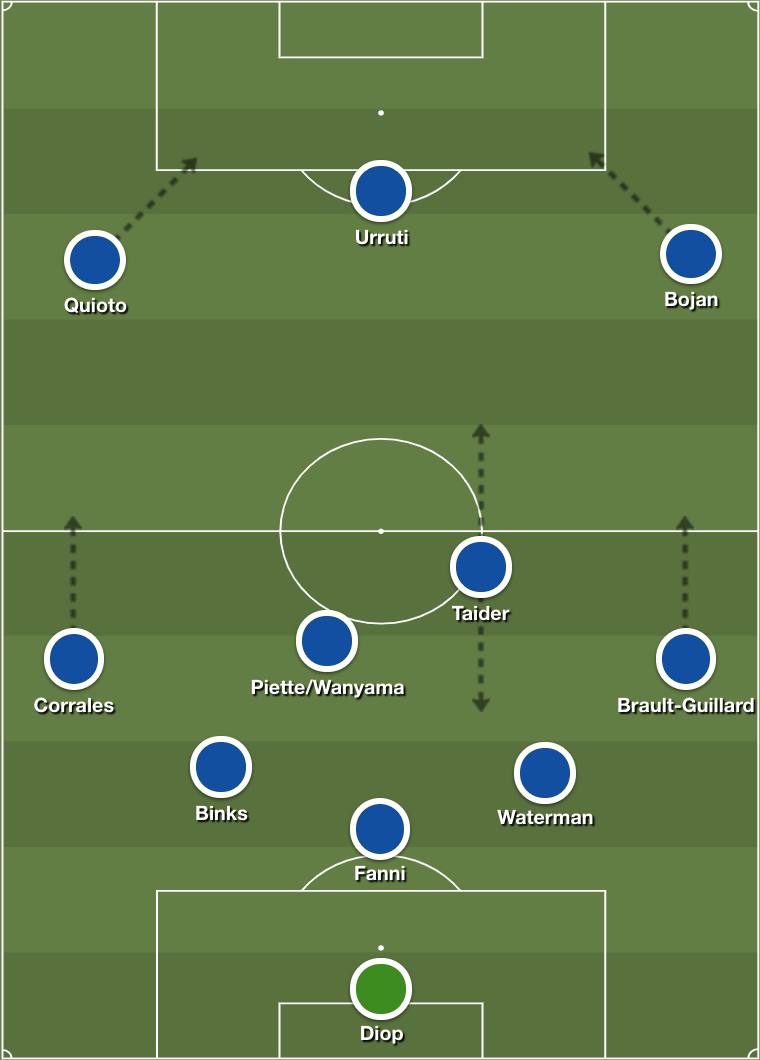
Predicting Toronto FC’s lineup for this match is a headache. With fitness concerns for Jozy Altidore, Jonathan Osorio, Justin Morrow, Omar Gonzalez and Chris Mavinga, there could be significant changes.
TFC coach Greg Vanney didn’t sound confident when speaking about Altidore’s and Osorio’s fitness, so it may be safe to assume they won’t start.
Morrow, Gonzalez and Mavinga all withdrew in the second half against D.C. United and those changes largely altered the course of the game. Those three should still be fit, but Richie Laryea could replace Auro Jr. at right back.
However, most of Toronto’s lineup should remain intact based on the tactical trends at play from its opening game of the tournament.

The Pozuelo-Piatti connection
Pablo Piatti logged 72 minutes for TFC on Monday. While he didn’t make a massive impact on the scoresheet, Piatti seemingly added a new element to Toronto’s attack.
Deployed as an inverted winger on the right flank, Piatti cut inside throughout the game, created some chances and produced shots of his own. Only Ayo Akinola (6) generated more attempts than the Argentine’s four among all players involved in the D.C. match.
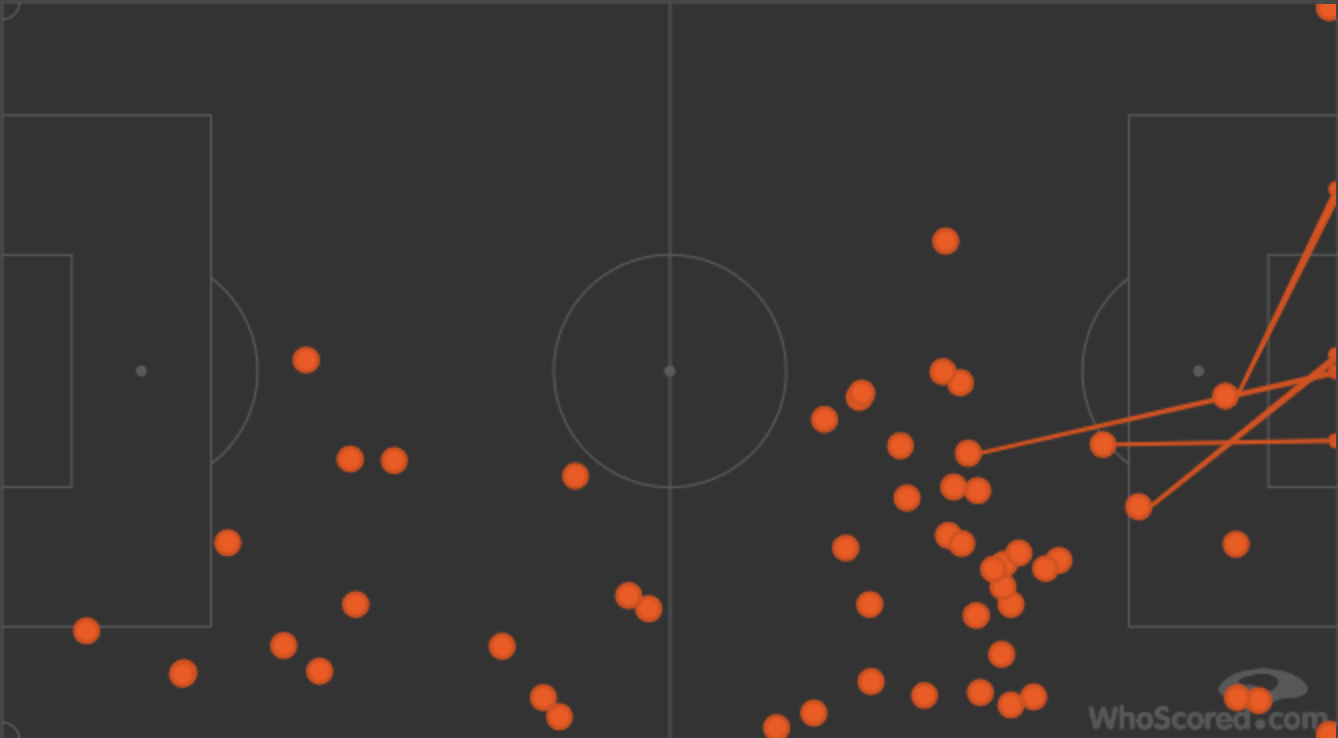 Pablo Piatti’s touch map vs. D.C. United. (via WhoScored.com)
Pablo Piatti’s touch map vs. D.C. United. (via WhoScored.com)
Piatti’s movement inside unlocked space down the right flank for Auro Jr. to exploit, along with Alejandro Pozuelo (No. 10), who’d drift to the right to combine with the Argentine winger (No. 7), completing 25 passes to one another.
 Toronto FC’s average positioning vs. D.C. United. (via SofaScore)
Toronto FC’s average positioning vs. D.C. United. (via SofaScore)
These sequences presented a dilemma for D.C. United. They didn’t know whether to overload the flank, where Auro Jr. was running, or the half-space that Piatti and Pozuelo occupied. This led to D.C.’s shape shifting towards Toronto’s right.

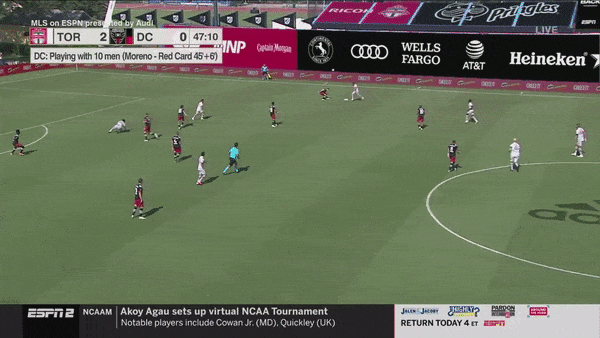
Yet when examining Toronto FC’s passes in the first half, a fair amount were attempted on the left side. That’s because that flank became open when D.C. focused on Pozuelo and Piatti.

That, in turn, led to opportunities on the left side and is why Montreal would be wise to deploy a 3-4-3 to provide adequate cover out wide.

How Montreal can exploit the flanks
Since Toronto will be focused on trying to drag Montreal out of position via the flanks, there will be opportunities for the Impact to exploit TFC out wide on the counter-attack.
D.C. United capitalized on the break to recover from a 2-0 deficit with 10 men and, given Montreal’s ability to counter, the Impact should be expected to replicate those tactics.
As mentioned, Morrow was pushing up high into the final third and Auro Jr. occasionally roamed into similar areas on the right. If the Impact can recover possession in their own defensive third and launch long passes towards Bojan, Romell Quioto or Okwonkwo down the wing, that could generate some quality chances.
All the more reason to start Brault-Guillard at right wingback. The 21-year-old Canadian recorded an expected goals buildup (xGB) per 90 minutes of 0.8 this season, per American Soccer Analysis. It’s still early in the campaign, but it shows how vital Brault-Guillard has been to the team’s attack.
More to come from Akinola?
One of the bright spots for TFC in the draw with D.C. United was the performance of Ayo Akinola. The TFC academy product scored twice, but it wasn’t just his finishing that stood out.
Akinola also registered six shot-creating actions (a dribble, drawn foul or pass that directly leads to a shot), completed 17 of 21 passes and had six attempts at goal to emphasize a magnificent performance.
When he wasn’t involved, Akinola dropped into pockets of space to receive a pass and combine with his teammates.
In the still below, Akinola is at the centre circle with Michael Bradley on the ball. As soon as Bradley turns and passes to Pozuelo, the young forward is running in behind to receive the follow-up.


Even under pressure, Akinola was impactful. In the clip below, he shows awareness of open space on the left, but Morrow delayed his run so the pass is swept out for a throw-in.
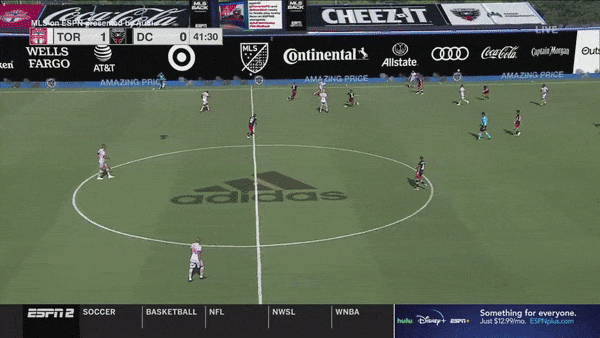
Nonetheless, it was a promising showing for Akinola and he should receive more opportunities, starting on Thursday against Montreal.
Wanyama or Piette?
Unless Henry decides to load the midfield, it’s likely one of Piette or Wanyama will be dropped from the lineup.
The burning question is which of the two should be sacrificed. Both Wanyama and Piette are deployed in the heart of midfield, but they have contrasting styles.
Piette has been a staple for the Impact since he joined in 2017. However, he tends to roam from his position and press the opponent. That’s evidenced by his high amount of pressures in MLS since 2018.
 Samuel Piette’s pressures (per 90 minutes) in MLS since 2018, via FBRef.com.
Samuel Piette’s pressures (per 90 minutes) in MLS since 2018, via FBRef.com.
However, Wanyama attempted fewer pressures with Tottenham in the 2017-18 and 2018-19 seasons – when he last played regularly – plus the numbers are lower in the defensive and middle thirds.
 Victor Wanyama’s heat map in all competitions since 2015-16 (left) and Samuel Piette’s heat map in all competitions with the Impact. (via SofaScore)
Victor Wanyama’s heat map in all competitions since 2015-16 (left) and Samuel Piette’s heat map in all competitions with the Impact. (via SofaScore)
Since 2018, Piette has completed 32 of 131 tackles attempted against dribblers for a success rate of around 24 per cent, per FBRef.com. The Canadian has been dribbled past around 1.37 times per 90 minutes.
Wanyama, by comparison, had a 49 per cent success rate against opponents on the dribble, per FBRef.com. That data only goes as far back as 2017 but dating back to the 2015-16 season, when Wanyama was starting every week, he’s been dribbled past no more than 1.2 times per 90 minutes in a single campaign, per SofaScore.
Obviously, both players were deployed in different systems, but Piette’s aggressiveness is part of his game, so if he has a disciplined player next to him it could be a solid partnership, but a partnership with Wanyama might lack the necessary attacking prowess. That’s why Saphir Taider is favoured to start.
 Statistical radars for Samuel Piette and Victor Wanyama.
Statistical radars for Samuel Piette and Victor Wanyama.